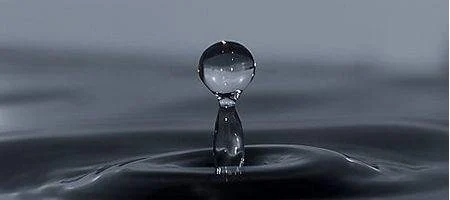Forget optical computing or quantum computing: researchers at Aalto University have successfully used water droplets as bits of digital information.

Using what they term ‘superhydrophobic droplet logic’, they’ve built a memory device, as well as devices for elementary Boolean logic operations.
Their invention’s based on the discovery that when two water droplets collide with each other on a highly water-repellent surface, they rebound like billiard balls.
“I was surprised that such rebounding collisions between two droplets were never reported before, as it indeed is an easily accessible phenomenon,” says Henrikki Mertaniemi, who adds that he conducted some of the early experiments on water-repellent plant leaves from his mother’s garden.
The team used a copper surface coated with silver, and chemically modified with a fluorinated compound. This made for a surface so water-repellent that water droplets roll off when it’s tilted only slightly. Superhydrophobic tracks guide the droplets along designed paths.
The researchers suggest that their invention could actually have practical applications – autonomous simple logic devices that don’t require electricity, for example.
And when the water droplets are loaded with reactive chemical cargo, they say, droplet collisions could control the onset of a chemical reaction. Combining this with droplet logic operations could potentially enable programmable chemical reactions where single droplets serve simultaneously as miniature reactors and bits for computing.






